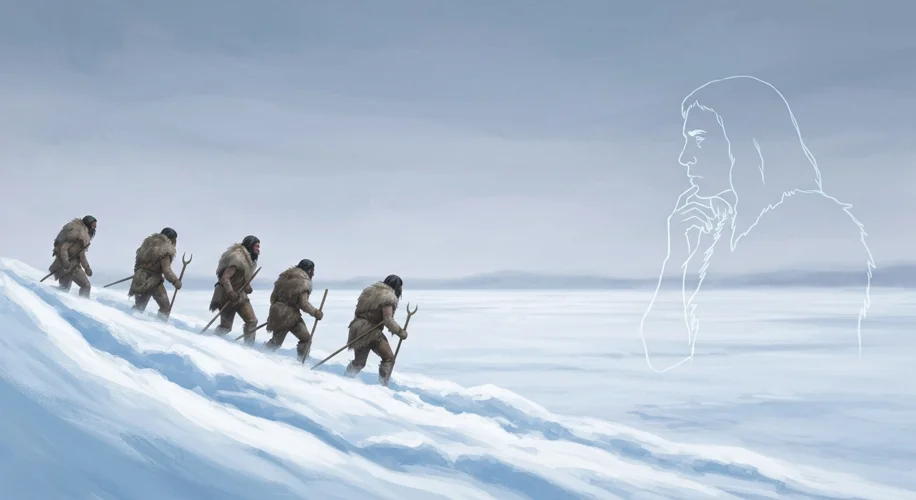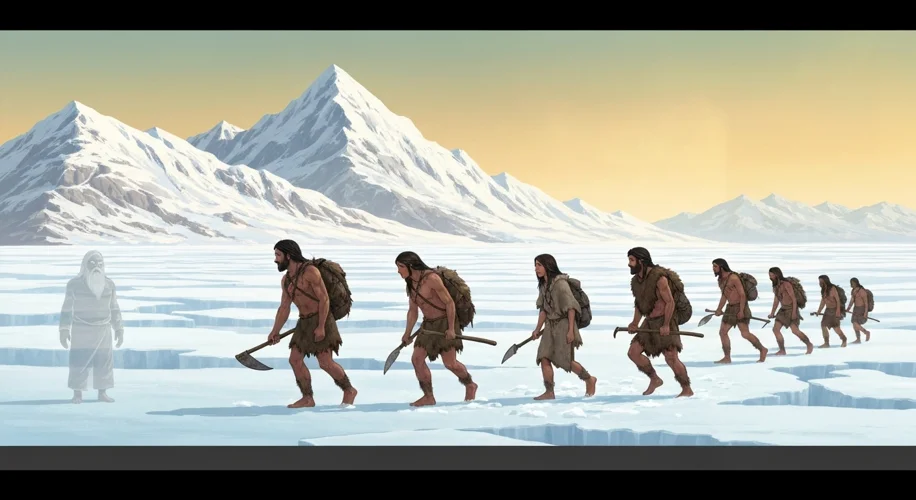Imagine a world veiled in ice, where colossal glaciers sculpted the very land. Into this stark, challenging landscape stepped our earliest ancestors, venturing across a land bridge from Asia into the vast, unknown continent of North America. This wasn’t a leisurely stroll; it was a daring odyssey, a testament to human resilience. But what if the secret to their survival wasn’t just grit and determination? What if a hidden genetic legacy, stretching back tens of thousands of years, played a crucial role?
For decades, the story of the First Americans has been pieced together through archaeology and the study of ancient skeletal remains. We know they were resourceful, adapting to diverse environments and developing sophisticated cultures. Yet, recent breakthroughs in genetic research have unveiled a startling revelation: a subtle but significant thread of Denisovan DNA woven into the fabric of Native American ancestry. This is not a tale of direct interaction with the enigmatic Denisovans, a sister group to Neanderthals, but rather a story of inheritance, passed down through migrations and intermingling populations long before the journey to the Americas began.
The Denisovans themselves remain a shadowy presence in our family tree. Known primarily from fragmented fossils discovered in the Denisova Cave in Siberia, they were a diverse group who roamed across Asia for hundreds of thousands of years. Unlike their Neanderthal cousins, whose presence is more widely documented, the Denisovans are largely known through the whispers of their DNA. What we do know is that they were not a monolithic group, but likely spread across vast territories, interbreeding with both Neanderthals and, crucially for our story, with the ancestors of modern humans.
Around 60,000 to 70,000 years ago, a significant migration of modern humans out of Africa occurred. These intrepid travelers, our direct ancestors, encountered Denisovans and Neanderthals in various parts of Eurasia. As they moved eastward, interbreeding with Denisovans became a key event in shaping the genetic makeup of populations that would eventually make their way to the Americas. This mixing wasn’t a single event but a series of encounters over millennia, leading to a complex tapestry of ancestry.
So, how could this ancient Denisovan DNA, so distant in time, have offered a survival advantage in the harsh new world of Ice Age North America? The answer lies in adaptation. The Denisovan lineage, having thrived for countless millennia across diverse Asian environments, likely carried genetic adaptations that proved invaluable to early Americans. One of the most compelling hypotheses centers on the immune system. Exposure to novel pathogens in a new continent would have been a significant challenge. Denisovan DNA may have provided advantageous immune responses, better equipping individuals to fight off unfamiliar diseases.

Another area of potential benefit is related to adaptation to cold climates. The ancestors of both Denisovans and early Americans experienced periods of glacial advance and varying temperatures. Genetic variants that enhanced metabolism, improved blood circulation in extreme cold, or aided in efficient energy storage could have been passed down. These adaptations would have been critical for survival in North America’s frigid winters and high-altitude environments, aiding in everything from thermoregulation to endurance.
The implications of this discovery are profound. It suggests that the success of the peopling of the Americas was not solely due to the ingenuity of Homo sapiens, but also to the genetic toolkit inherited from our ancient hominin relatives. The Denisovans, though long extinct as a distinct group, live on in our very DNA, a silent testament to their ancient existence and their contribution to our lineage.
This genetic connection opens up new avenues of research. Scientists are now working to pinpoint the specific Denisovan genes that might have conferred these advantages and to understand their precise functions. Was it a specific gene variant related to bone density that helped withstand cold? Or perhaps a more robust metabolic pathway? Each discovery deepens our understanding of human migration, adaptation, and the intricate web of our evolutionary past.
The story of the First Americans, now enriched with the knowledge of Denisovan DNA, is a powerful reminder of our shared deep history. It highlights that human resilience is often built on the foundations laid by those who came before, even those we barely know. The whispers of Denisovan DNA are not just a scientific curiosity; they are a vital chapter in the epic saga of humanity’s journey across the globe, a story of survival, adaptation, and the enduring legacy of our ancient kin.

